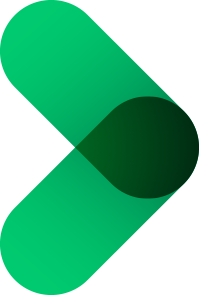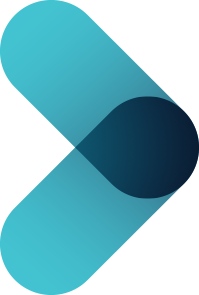GIVE NOW before 2025 ends—your gift will be doubled to help children in need. Click here to 2x your impact!

Ranked nationally in pediatric care.
Arkansas Children's provides right-sized care for your child. U.S. News & World Report has ranked Arkansas Children's in seven specialties for 2025-2026.

It's easier than ever to sign up for MyChart.
Sign up online to quickly and easily manage your child's medical information and connect with us whenever you need.

We're focused on improving child health through exceptional patient care, groundbreaking research, continuing education, and outreach and prevention.

When it comes to your child, every emergency is a big deal.
Our ERs are staffed 24/7 with doctors, nurses and staff who know kids best – all trained to deliver right-sized care for your child in a safe environment.

Arkansas Children's provides right-sized care for your child. U.S. News & World Report has ranked Arkansas Children's in seven specialties for 2025-2026.

Looking for resources for your family?
Find health tips, patient stories, and news you can use to champion children.

Support from the comfort of your home.
Our flu resources and education information help parents and families provide effective care at home.

Children are at the center of everything we do.
We are dedicated to caring for children, allowing us to uniquely shape the landscape of pediatric care in Arkansas.

Transforming discovery to care.
Our researchers are driven by their limitless curiosity to discover new and better ways to make these children better today and healthier tomorrow.

We're focused on improving child health through exceptional patient care, groundbreaking research, continuing education, and outreach and prevention.

Then we're looking for you! Work at a place where you can change lives...including your own.

When you give to Arkansas Children's, you help deliver on our promise of a better today and a healthier tomorrow for the children of Arkansas and beyond

Become a volunteer at Arkansas Children's.
The gift of time is one of the most precious gifts you can give. You can make a difference in the life of a sick child.

Join our Grassroots Organization
Support and participate in this advocacy effort on behalf of Arkansas’ youth and our organization.

Learn How We Transform Discovery to Care
Scientific discoveries lead us to new and better ways to care for children.

Learn How We Transform Discovery to Care
Scientific discoveries lead us to new and better ways to care for children.

Learn How We Transform Discovery to Care
Scientific discoveries lead us to new and better ways to care for children.

Learn How We Transform Discovery to Care
Scientific discoveries lead us to new and better ways to care for children.

Learn How We Transform Discovery to Care
Scientific discoveries lead us to new and better ways to care for children.

Learn How We Transform Discovery to Care
Scientific discoveries lead us to new and better ways to care for children.

When you give to Arkansas Children’s, you help deliver on our promise of a better today and a healthier tomorrow for the children of Arkansas and beyond.

Your volunteer efforts are very important to Arkansas Children's. Consider additional ways to help our patients and families.

Join one of our volunteer groups.
There are many ways to get involved to champion children statewide.

Make a positive impact on children through philanthropy.
The generosity of our supporters allows Arkansas Children's to deliver on our promise of making children better today and a healthier tomorrow.

Read and watch heart-warming, inspirational stories from the patients of Arkansas Children’s.

Hello.

Arkansas Children's Hospital
General Information 501-364-1100
Arkansas Children's Northwest
General Information 479-725-6800


What's the Difference Between a Migraine and a Headache?
Published date: June 28, 2021
Updated date: May 24, 2024
About Migraine Headaches
- Migraine is the third most prevalent illness in the world. Nearly one billion people suffer from them. While they most often strike adults, migraine is very common in children.
- Migraine has been diagnosed in children as young as 18 months old.
- Nearly 10% of school-age kids suffer from migraines, and about 28% of 15-19-year-olds are affected. Fifty percent of migraine sufferers have their first attack before they turn 12.
- Interestingly, before puberty, boys are afflicted more often than girls. But as adolescence draws near, the incidence increases more quickly in girls than boys. By the time they turn 17, 23% of girls have experienced a migraine versus 8% of boys.
What’s the difference between a migraine and a headache?
The pain of migraine is usually more severe than that of a regular headache. Migraine typically includes throbbing on one side of the head that frequently gets worse with activity. Unlike a headache, other symptoms, such as nausea, vomiting, vision difficulties (seeing flashing lights, for example), light or sound sensitivity, and tingling often accompany a migraine.
At what age can children get migraines?
Any child can get a migraine. About 10% of children ages 5-15 and up to 28% of teens get them. Half of the people who get migraines have their first attack before the age of 12. Migraines have even been reported in children as young as 18 months.
What are common migraine triggers?
Several things can cause migraines, so you and your child need to keep a diary like this to track of potential causes. Triggers can include:
- Poor hydration. Most children need eight glasses (8 ounces each) of healthy fluids daily. These healthy fluids include water, juice, Gatorade or Powerade. Drinking caffeinated or sugary beverages is NOT healthy and may make it difficult to control your child’s headaches.
- Lack of sleep or poor sleep habits. A regular sleep routine is important to establish and allow for 8-10 hours of sleep per night. This may vary some due to age. If your child snores or is excessively restless during sleep, you should let your neurologist know.
- Food triggers. Common food triggers include caffeine, chocolate, nuts, aged cheeses, nitrates in processed meats like hot dogs and bacon, monosodium glutamate (MSG is a common flavor enhancer found in many vending machine snacks, ramen noodle flavor packets, and soy sauce), excess salt and artificial sweeteners. Migraines can be triggered when eating large servings of these foods on an empty stomach.
- Skipping meals, especially breakfast. Regular meals are very important. Avoid skipping meals and eat a healthy snack between mealtimes when needed.
- Stress. Avoid over-crowding your child’s schedule. Address signs of distress right away.
What can you do to help prevent migraines?
While migraine generally can’t be predicted, here are a few steps you can take to help prevent your child from having one:
- Make sure your child gets regular exercise.
- Your child should take all medications as prescribed by their provider.
- Avoid the overuse of over-the-counter pain medications such as Tylenol, Motrin, Excedrin, Ibuprofen, etc. Limit the use of these medications to no more than three doses per week to reduce the risk of rebound headaches.
- Keep a diary of your child’s headaches to review at each doctor’s visit, which may help identify contributing factors.

Appointments
New and existing patients can visit our appointment hub for several ways to request an appointment, including online scheduling for many services.
Request an appointment
Related Content
-
Blog
Concerned about the Measles and the Measles Vaccination?
Learn more about protecting your child against measles, a highly contagious virus. Arkansas Children’s answers your questions about the virus and the vaccines that prevent it.
-
Blog
NICU, Neurology Transform Newborn Care with Neonatal Neurocritical Care Program
Arkansas Children’s Hospital neonatal neurocritical care program is a multidisciplinary effort between neonatology and neurology providing therapeutic hypothermia, or whole-body cooling, to newborns. The specialized team improves survival rates and provides advanced treatments and research opportunities.
-
Blog
Revolutionary Gene Therapies Offer New Hope for Boys with Duchenne Muscular Dystrophy
Read how Arkansas Children's Hospital is leading gene therapy clinical trials for Duchenne Muscular Dystrophy.

